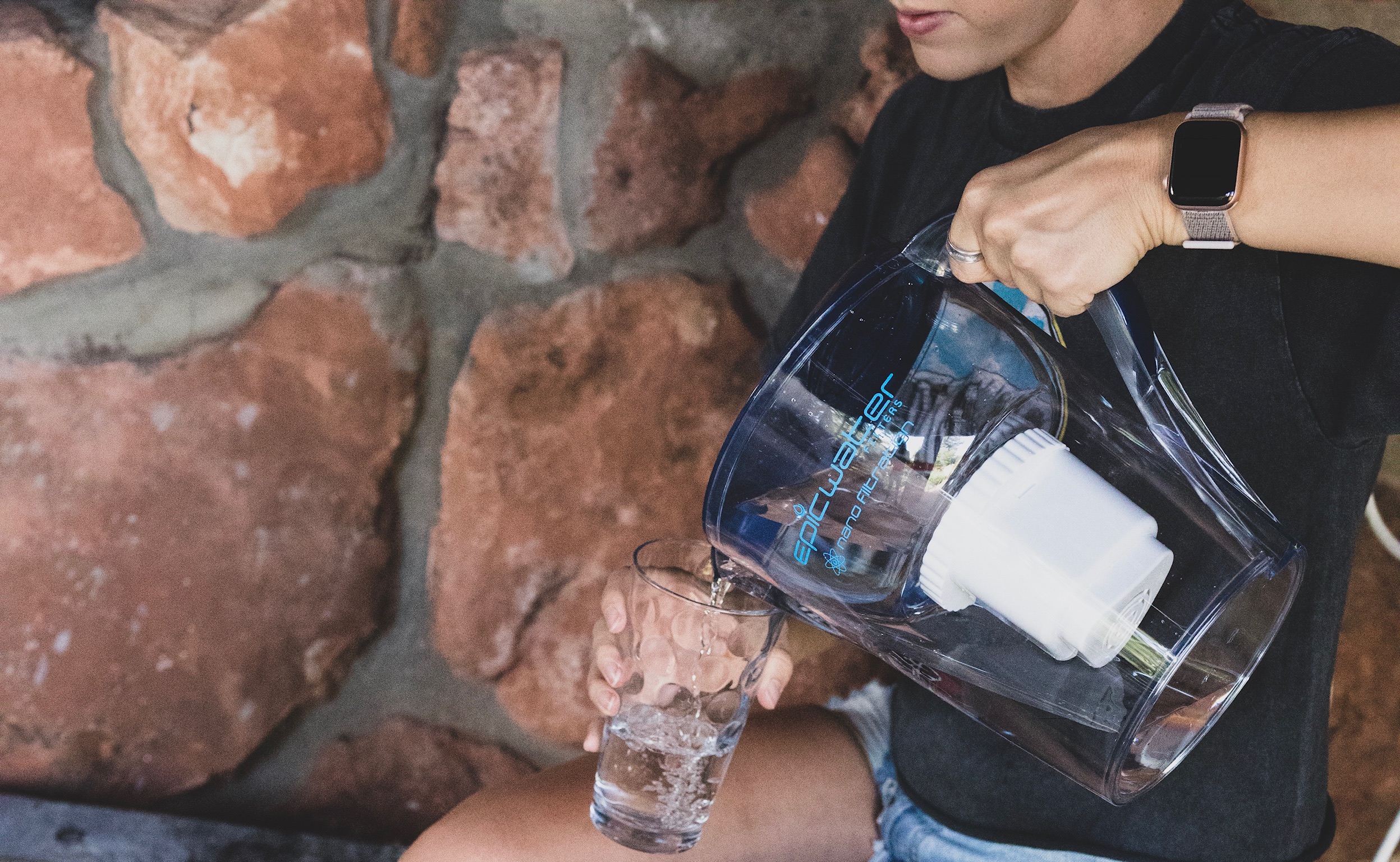
How to improve drinking water quality?
Of course, a filter is important for clean water but what else can you do at home to improve the quality of your water? Let's start with the basics. The easiest way to improve your water at home is to filter it! Our cities and towns do their best to ensure that the water coming out of our faucets is safe to drink. Safe is somewhat of a loose term though, really they're just trying to ensure that no one is going to get sick from drinking their water at home.
Of course, we know that our local water utilities are not always successful in ensuring our water is safe (The United States had 5,000 boil water alerts alone from the years 2015 to 2018). And even so, it doesn't account for all the other contaminants in our water that over time are linked to various health problems and symptoms. I think the saying, "If you want something done well, do it yourself" applies here. We like to play it safe at Epic, and that's why we opt into filtered water and out of the doubt and wonder. This way, regardless of what your town or city is doing with your water, you can still rest assured that you're getting the best filtered water out there.
What can you do to improve the quality of water you consume in your household?

1. Test your water: It's important to know what's in your water and what's going into your body as a result. Really, the only way to get quality information about what's in your water is to use a laboratory. (Not so much TDS Meters, feel free to check out that blog here to see why) We recommend sending your water to a certified lab like EnviroTestKits. We like their Safe Home Ultimate Kit. It is relatively expensive, but it's the best way to find out what's really in your water.
2. Fill up your water filter from the cold water tap: Hot water can dissolve contaminants and may also contain metals, sediment, and some bacteria. So by using hot water, you may be exposing yourself to some unwanted particulate and it will likely clog up your filter faster. It is alway best to start off with the best available water before filtering.
3. Flush Your Water Line: It's a great idea to routinely run cold water taps for two minutes before using your tap water for drinking or cooking. Water that hasn't been used for several hours sits in your pipes at home and while it sits there, metals can leech into your water supply and harmful colonies of bacteria can build up in there. So before you fill up your water filter pitcher or bottle or after an extended time away from home, remember to run your cold water for about two minutes to ensure you bypass all that nastiness.
4. Change Your Filters: Bacteria and metals can build up in filter cartridges. Be sure to follow the instructions on your filter because filtration declines over time as your filter gets clogged. So the strongest your filter will ever be is on the first day of use. Over time your filter will gradually degrade in performance until it is no longer working at all. This is true for all filters no matter the manufacturer.
5. Cook With Filtered Water: Cooking with filtered water is an easy way to improve the taste of your food and the health of your family. Anything cooked in hot water gets exposed to whatever contaminants are in that water. So now you're eating and drinking those contaminants! When water boils, contaminants like chlorine can become airborne and contribute to lower air quality. So just fill up from your pitcher or filtered tap water before cooking up some delicious eats.
6. Whole Home Water Filters: Whole home water filters aren't the best at removing things like lead, fluoride, or TTHMs. This is because there isn't quite enough contact time between water and the filter. However, they can still be a great part of a home filtration regiment, and can be one step along your water's way to your mouth.
7. Replace Old Household Plumbing: We have found plumbing to be a big potential source of lead and copper exposure. Copper pipes for instance, which are most common in older homes, can contain larger amounts of lead which leech into your water supply. Instead, if you're feeling up to some home improvement, you can replace old copper pipes with lead-free plumbing fixtures that contain 0.25 percent or less of lead, then flush the water through the new pipes for about five minutes once a day for three days in a row, and then drink on feeling good about the improvements to your water quality you've made!
It's always a good idea to do a routine check of your piping in the house and make sure there are no cracks or leaks that can get unwanted particulate into your water.

If you have any questions, or want some more tips, feel free to reach out and say hi! We know water quality is as important to you as it is to us, so we hope we've been able to offer some more insight into that department ;)

Forrest G
Crazy about clean water, rocks (climbing them), and gardening
